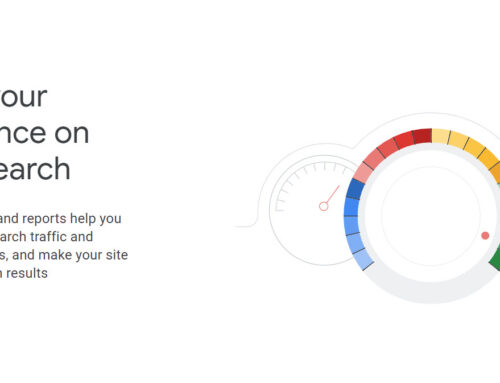Introduction
Guest posting, also known as guest blogging, has become a crucial strategy in digital marketing. It involves creating and publishing content on external websites or blogs as a guest author, allowing businesses to:
- Reach new audiences
- Build valuable backlinks
- Establish industry authority
Guest posting offers a mutually beneficial opportunity for both the guest blogger and the host website. By crafting high-quality, informative content and strategically placing it on relevant websites, businesses can:
- Expand their reach
- Drive targeted traffic to their site
- Improve their search engine rankings
In this article, we’ll explore the world of guest posting, diving into its benefits, strategies, and best practices.
The Benefits of Guest Posting
Guest posting offers a multitude of benefits for businesses looking to enhance their online presence and reach their target audience. Some of the key advantages include:
Increased Brand Exposure
- Reach new audiences
- Tap into the host website’s established readership
- Expand your brand’s online presence
Improved SEO
- Build high-quality backlinks
- Enhance search engine rankings
- Drive targeted organic traffic to your website
Established Authority
- Showcase your expertise in your industry
- Position your brand as a thought leader
- Build trust and credibility with your target audience
Targeted Traffic
- Reach audiences interested in your niche
- Drive qualified leads to your website
- Increase potential for conversions
Networking Opportunities
- Connect with other industry professionals
- Foster relationships with influencers and thought leaders
- Open doors for collaborations and partnerships
By leveraging the power of guest posting, businesses can effectively:
- Boost their online visibility 📈
- Engage with their target audience 🎯
- Establish their brand as an authority in their industry 🏆
Developing a Guest Posting Strategy
To maximize the benefits of guest posting, it’s essential to develop a well-defined strategy. Here are the key steps to create an effective guest posting strategy:
Define Your Goals
- Identify your primary objectives (e.g., brand exposure, SEO, lead generation)
- Set specific, measurable, achievable, relevant, and time-bound (SMART) goals
- Align your guest posting efforts with your overall marketing strategy
Research Target Websites
- Identify websites and blogs relevant to your industry or niche
- Analyze their audience, engagement, and authority
- Ensure their values and tone align with your brand
Craft Compelling Content
- Develop unique, valuable, and informative content
- Tailor your content to the host website’s audience and style
- Incorporate relevant keywords naturally throughout the piece
Optimize for SEO
- Include relevant keywords in your title, headings, and meta descriptions
- Use appropriate header tags (H1, H2, H3) to structure your content
- Implement internal and external links to reputable sources
Promote Your Guest Posts
- Share your guest posts on your social media channels
- Engage with comments and feedback on the host website
- Utilize email marketing to notify your subscribers about your guest posts
By following these steps and consistently implementing your guest posting strategy, you can effectively tap into the power of guest blogging to grow your online presence and reach your business goals.
🎯 Remember, a successful guest posting strategy requires careful planning, research, and execution. Stay focused on your goals, create valuable content, and promote your guest posts to maximize their impact.
Finding Guest Posting Opportunities
Discovering the right guest posting opportunities is crucial to the success of your guest blogging strategy. Here are some effective methods to find relevant websites and blogs for guest posting:
Google Search
- Use search operators like “keyword” + “write for us” or “keyword” + “guest post”
- Example: “digital marketing” + “guest post”
- Explore the search results to find websites that accept guest posts in your niche
Social Media
- Leverage social media platforms like Twitter and LinkedIn
- Search for relevant hashtags (e.g., #guestpost, #guestblogging)
- Connect with influencers and thought leaders in your industry
Competitor Analysis
- Identify your competitors’ backlinks using tools like Ahrefs or SEMrush
- Analyze the websites linking to your competitors’ content
- Reach out to these websites for guest posting opportunities
Guest Posting Platforms
- Utilize platforms specifically designed for guest posting (e.g., MyBlogGuest, Blogger Linkup)
- Browse through the available opportunities and submit your pitches
Networking
- Attend industry events and conferences
- Build relationships with other bloggers and influencers
- Collaborate and exchange guest posting opportunities
When searching for guest posting opportunities, consider the following factors:
- The website’s relevance to your industry or niche 🎯
- The quality and engagement of their audience 👥
- The website’s domain authority and backlink profile 📈
- The alignment of their values and tone with your brand 🤝
By using these methods and considering these factors, you can identify high-quality guest posting opportunities that align with your business goals and target audience.
Remember, building relationships and providing value to the host website’s audience should be your top priorities when seeking guest posting opportunities. 🌟
Creating High-Quality Guest Posts
Crafting high-quality guest posts is essential to make a lasting impact on your target audience and achieve your guest posting goals. Here are some key elements to consider when creating guest posts:
Compelling Headlines
- Craft attention-grabbing headlines that entice readers to click
- Use numbers, questions, or powerful adjectives to create intrigue
- Ensure your headline accurately reflects the content of your post
Engaging Introduction
- Hook your readers with a strong opening paragraph
- Use storytelling, statistics, or thought-provoking questions to draw them in
- Clearly establish the purpose and value of your post
Valuable Content
- Provide in-depth, well-researched, and informative content
- Address the pain points and interests of your target audience
- Offer practical tips, strategies, or insights that readers can apply
Scannable Format
- Use short paragraphs, bullet points, and subheadings to break up the text
- Incorporate visuals like images, infographics, or videos to enhance engagement
- Ensure your content is easy to read and visually appealing
Call-to-Action (CTA)
- Include a clear and compelling CTA at the end of your post
- Encourage readers to take action, such as visiting your website or subscribing to your newsletter
- Offer a relevant resource or incentive to motivate them to act
When creating guest posts, remember to:
- Tailor your content to the host website’s audience and style 🎯
- Provide unique insights and perspectives that set your content apart 💡
- Use a consistent brand voice and tone throughout your post 🗣️
- Proofread and edit your content thoroughly before submitting 🔍
By following these guidelines and focusing on delivering value to your readers, you can create high-quality guest posts that effectively showcase your expertise, engage your target audience, and drive meaningful results for your business. 📈✨
Maximizing the Impact of Your Guest Posts
To ensure your guest posts achieve the desired impact and contribute to your overall marketing goals, consider implementing these strategies:
Strategic Link Placement
- Include relevant links to your website or blog within your guest post
- Use descriptive anchor text that accurately reflects the linked content
- Avoid overusing links, as it may appear spammy to readers and search engines
Social Media Promotion
- Share your published guest posts on your social media channels
- Engage with comments and feedback from your followers
- Encourage social sharing by including social media buttons in your post
Email Marketing Integration
- Notify your email subscribers about your latest guest posts
- Provide a brief summary and a direct link to the post
- Encourage them to read, comment, and share the post with their network
Repurposing Content
- Adapt your guest post into different formats (e.g., infographics, videos, podcasts)
- Share these repurposed pieces on your own website or social media channels
- Extend the reach and lifespan of your guest post content
Monitoring and Analysis
- Track the performance of your guest posts using analytics tools
- Monitor metrics like traffic, engagement, and conversions
- Use these insights to refine your guest posting strategy and optimize future efforts
By implementing these strategies, you can:
- Amplify the reach and impact of your guest posts 📣
- Drive targeted traffic and leads to your website 🎯
- Strengthen your brand’s online presence and authority 💪
- Foster lasting relationships with your target audience 🤝
Remember, the success of your guest posting efforts depends on consistently creating high-quality content, promoting your posts effectively, and engaging with your audience genuinely. 💡
📊 Fun Fact: According to a study by SEMrush, 60% of blogs write 1-5 guest posts per month, highlighting the importance of guest posting in modern content marketing strategies.
Measuring the Success of Your Guest Posting Strategy
To continually refine and improve your guest posting strategy, it’s crucial to measure its success and analyze key performance indicators (KPIs). Here are some important metrics to track:
Referral Traffic
- Monitor the traffic generated from your guest posts using Google Analytics
- Track the number of visitors, pageviews, and average session duration
- Identify which guest posts drive the most traffic to your website
Backlink Quality
- Assess the quality and relevance of the backlinks acquired through guest posting
- Use tools like Moz or Ahrefs to measure the Domain Authority (DA) and Page Authority (PA) of the linking pages
- Focus on securing high-quality backlinks from reputable and authoritative websites
Engagement Metrics
- Track the number of comments, shares, and likes on your guest posts
- Monitor the social media mentions and tags related to your guest posts
- Engage with your audience and respond to their feedback and inquiries
Conversion Rates
- Measure the number of visitors from your guest posts who take desired actions (e.g., subscribing to your newsletter, making a purchase)
- Set up goal tracking in Google Analytics to monitor specific conversion events
- Analyze the conversion rates and identify opportunities for optimization
Brand Mentions
- Track the number of brand mentions and citations resulting from your guest posts
- Use social listening tools like Hootsuite or Mention to monitor online conversations
- Assess the sentiment and context of the brand mentions to gauge the impact on your brand reputation
By regularly monitoring and analyzing these metrics, you can:
- Identify the most effective guest posting tactics and channels 📈
- Optimize your strategy based on data-driven insights 📊
- Demonstrate the ROI of your guest posting efforts to stakeholders 💰
- Continuously improve your guest posting approach for better results 🎯
Remember, measuring the success of your guest posting strategy is an ongoing process. Regularly review your KPIs, adjust your tactics accordingly, and strive for continuous improvement. 📈✨






























